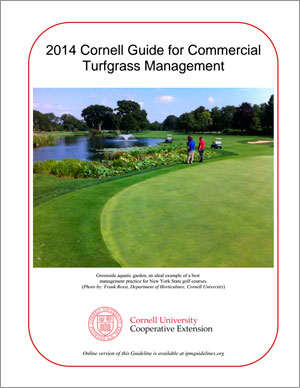Integrated Pest Management (IPM) concepts were originally developed in the 1960s by entomologists who examined pest management, especially the use of pesticides, as it relates to both economic value and environmental impact in agriculture. Since then, the definition and practice of IPM has grown to include all types of pests (insects, weeds, pathogens and diseases, and vertebrates) and settings beyond agriculture such as parks, golf courses, homes, and office buildings (Bajwa and Kogan 2002; Hoffmann and Gangloff-Kaufmann 2004).
The turf industry has embraced IPM and virtually all modern textbooks and courses on turfgrass management include IPM. IPM for turf can be defined as follows:
IPM is a sustainable approach to managing pests by combining biological, cultural, physical, and chemical tools in a way that minimizes economic, health, and environmental risks and maintains turfgrass quality.
The concepts and principles of IPM should continually be reviewed and refocused with the goal of protecting water quality and soil on any property. Key tenets of IPM include pest prevention as a first line of defense and basing pest management decisions on:

- knowledge of pest biology and life cycle
- action thresholds—derived scientifically and through experience
- monitoring of pests
- monitoring of turfgrass health
- monitoring of weather conditions and forecasts
IPM is a useful framework for addressing course needs, while prioritizing initiatives and tasks. Using IPM requires careful attention to detail, which usually results in improved course quality, often using fewer inputs. By following the latest research, managers can have high quality playing surfaces with minimal impact on the environment. Research at Bethpage State Park has shown that IPM can result in 33 to 96% less environmental impact without reducing course quality, and does not cost more than conventional management (Rossi and Grant 2009). IPM is flexible and superintendents can usually balance course quality and environmental goals. Although IPM permeates all aspects of course management and planning, it can be thought of in seven steps.

For more information, see:
- New York State’s IPM Program: https://nysipm.cornell.edu/
- Reducing Chemical Use on Golf Course Turf: Redefining IPM:
www.hort.cornell.edu/turf/pubs/manual.html - Cornell Guide for Commercial Turfgrass Management: https://store.cornell.edu/c-875-pmep-guidelines.aspx/
- Bethpage State Park research: https://ecommons.cornell.edu/bitstream/handle/1813/44515/reducing-risks-golf-NYSIPM.pdf?sequence=2&isAllowed=y
